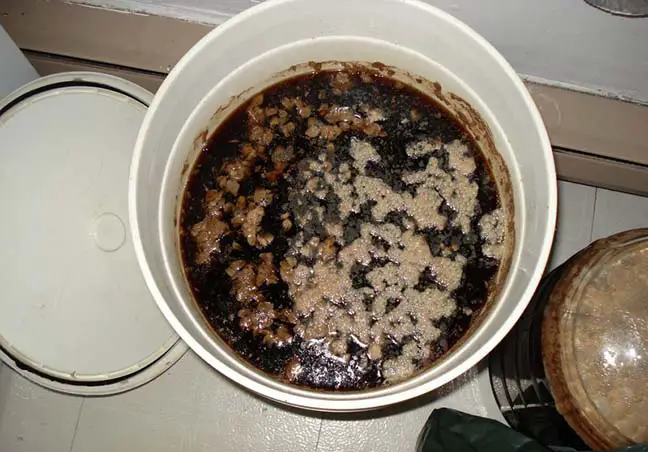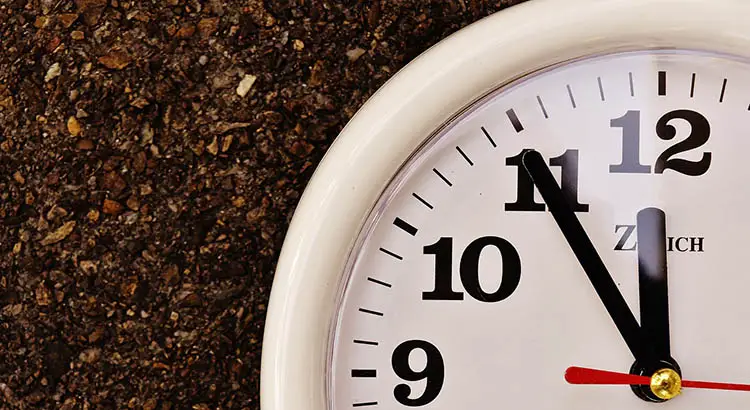If you are planning on brewing beer it is important to know roughly how long that takes to make each variety of beer. If you want to make sure that your beer has fully matured in the fermentation stage you should be waiting for a variety of signs before you know it is time to bottle.
Start to first drink, beer can be made and tried from 1 week to 1 year, but the average for an Ale is 4 weeks. Some styles like Pale Ales can ferment in a few days only and be consumed almost right away. Some other types of beers like Lagers or Belgian triples require (much) longer fermentation.
Here are some of the top signs to watch out for in fermentation and the average amount time that it takes to brew certain varieties of beer so that you have a frame of reference.
Signs with fermentation
Usually one of the top things that you will look at during fermentation is the temperature as well as the airlock. If an airlock doesn’t seal properly or the beer you are brewing is not kept under careful temperatures it can often lead to bacteria growth and a spoiling of the beer. While you don’t have to stand over your beer to check over it constantly is extremely important to check on it every day or so during the fermentation process.
For the first 24 to 72 hours after you place your beer in the fermenters there is likely a chance of some lag time. Lag time will be moments for which your yeast is not activated and not producing any type of airflow through the airlock. Normally you will start to see the airlock bubbling away in the first 72 hours after the lag time is completed. Maintaining an ideal fermentation temperature and potentially using a yeast starter can help to minimize the lag time and ensure you can be bottling your beer a little bit sooner.
A basic rule of thumb for any type of fermentation is to wait at least a week before even considering opening your beer or opening the airlock. Letting the beer sit and simply ferment is crucial to ensuring it maintains its alcohol quantity. If you continue to jostle the carboy or remove the airlock, this can potentially lead to bacteria growth which can cause problems with flavor or problems with the formation of the alcohol in the beer.

The time it takes to brew your beer from start to the first drink
Going from raw materials and getting a brew kit and going to actually drinking the beer will depend on many different factors. Processing and actually preparing your beer, regardless of the variety is usually what takes the least amount of time in homebrewing. In many cases with a kit homebrewing takes just a few hours to prepare, is the fermentation process that takes the longest amount of time.
The minimum amount of time that you can expect from opening your homebrew kit to drinking beer is one weeks with single fermentation.
Most reactions will also recommend bottle conditioning before drinking to ensure maximum quality.
Waiting at least six weeks total before drinking your beer will likely yield the best results for even the quickest to brew varieties.
A light lager for example will definitely ferment at a different rate than an ale and this can add time to the length of your homebrew.
Fermentation times recommended
Light ale:
A light ale will typically take around 1 week of primary fermentation followed by one to 2 weeks of secondary fermentation. These beer is often mature much faster because they are of lighter flavors. The bottle conditioning after is recommended for at least four weeks to make sure that the bitterness of the alcohol can subside.
Amber ale:
Amber ale usually takes one week of primary and at least 2 to 3 weeks of secondary fermentation. This beer will become darker in color the longer that it sits and it’s also strongly recommended to let it sit in bottles for around four weeks. This will help to normalize the colors and add to the smoothness of the beer.
Darker ale:
Dark ale takes one week in primary and a minimum of 3 to 4 weeks and secondary fermentation. These beers generally take the longest aging time out of ales and a porter will need to have all of the sediment completely settled at the bottom of the fermenter before any bottling takes place.
Light lager:
A light lager takes 1 to 2 months in primary fermentation and two months and secondary. Some light lagers even require special equipment for fermentation. These can be lengthy and they need to be monitored for temperature throughout.
Amber Lager:
An Amber Lager generally takes 3 to 4 months in secondary and two months in primary fermentation. Some of the darker varieties of Amber lager and up sitting for more than six months to improve with age.
Dark lager:
Many dark lagers should spend at least 2 to 3 months in primary fermentation and nine months in secondary fermentation. This can take real planning and monitoring. You really just have to check on these once every few days and make sure that the airlock has lots of water in it.
High alcohol beer:
For ideal brewing conditions with high alcohol beer above 7% or more, it’s recommended to spend at least two weeks in primary fermentation and then 9 to 12 months in secondary fermentation.
These types of beer require some of the most care and attention and it’s recommended that you don’t even try with a hydrometer reading until it has sat for at least 8 to 9 months in secondary.
Keep some of these figures in mind if you are planning on brewing these various types of beer in the same way that professional brewers have been making the same varieties.

